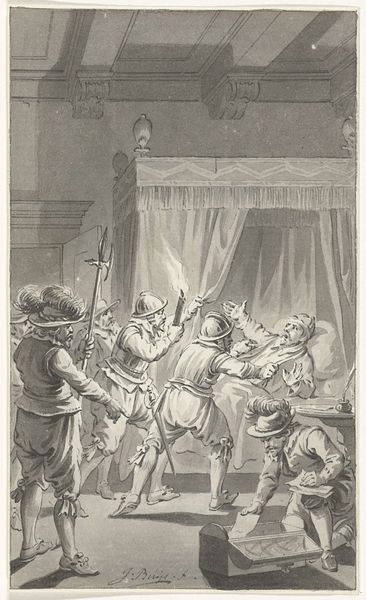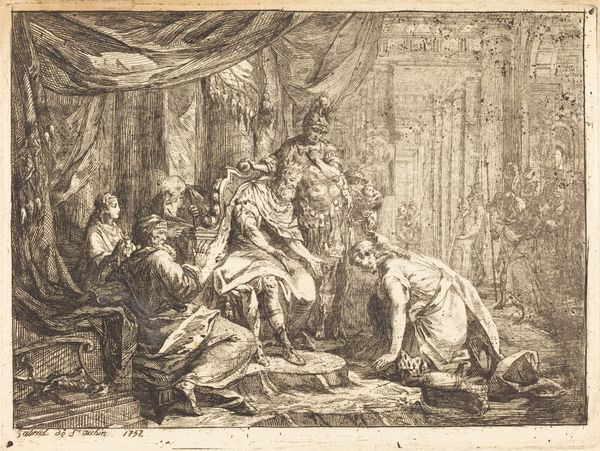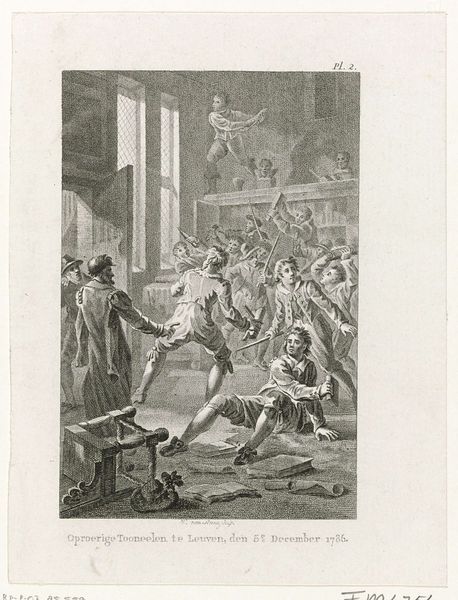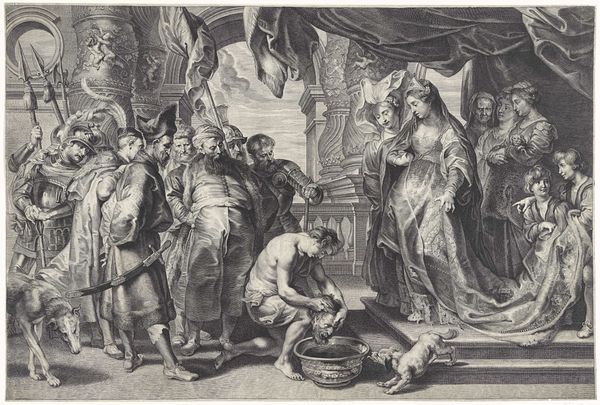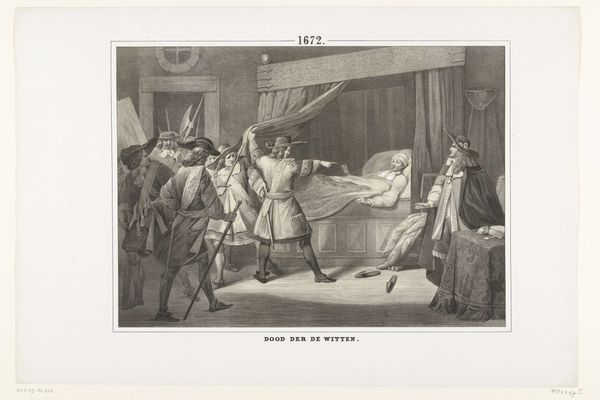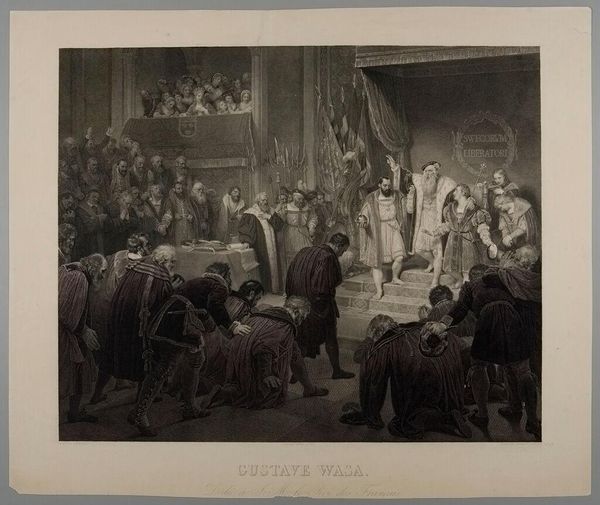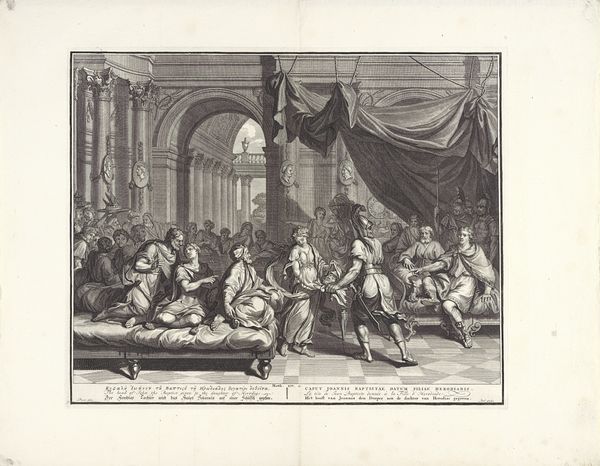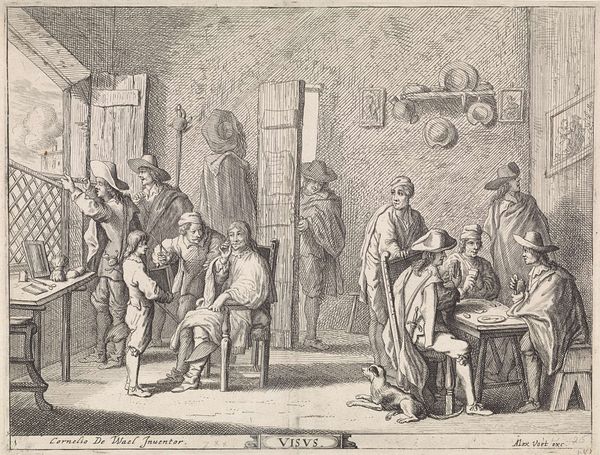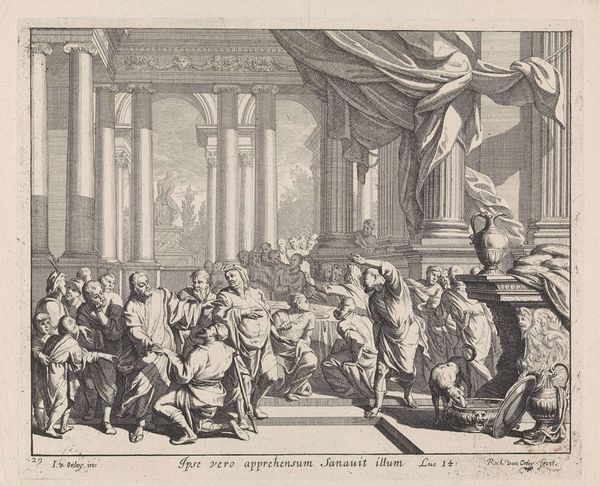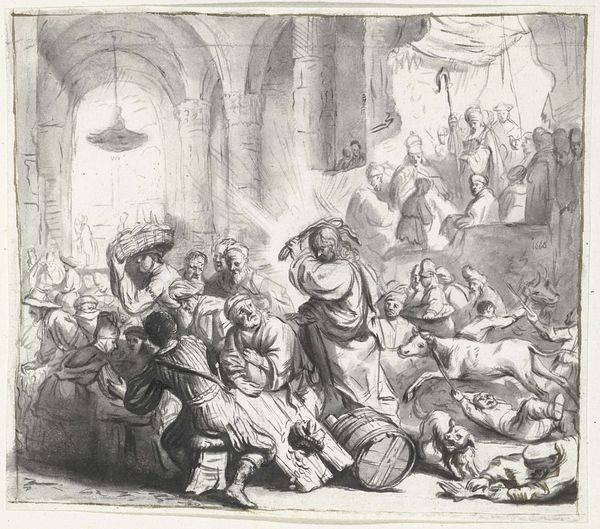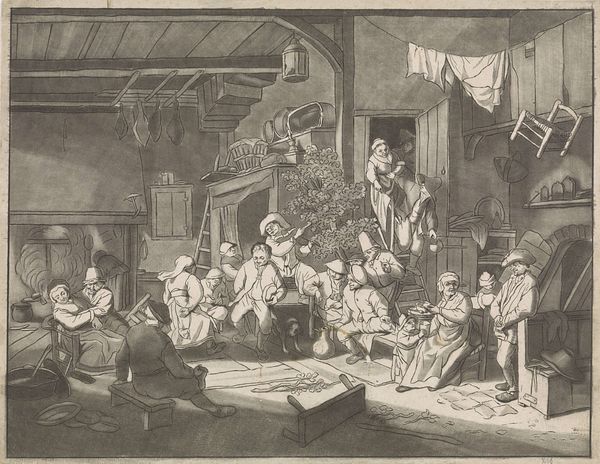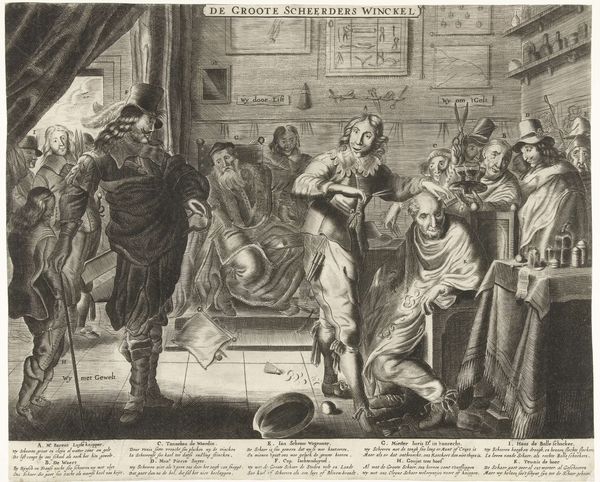
De gebroeders Johan en Cornelis de Witt aangevallen in hun kamer boven de Voorpoort van de Gevangenpoort te 's-Gravenhage, 20 augustus 1672 1755
0:00
0:00
#
comic strip sketch
#
quirky sketch
#
sketch book
#
personal sketchbook
#
idea generation sketch
#
sketchwork
#
pen-ink sketch
#
sketchbook drawing
#
storyboard and sketchbook work
#
sketchbook art
Dimensions: height 150 mm, width 195 mm
Copyright: Rijks Museum: Open Domain
Curator: The Rijksmuseum holds this evocative pen and ink drawing by Simon Fokke from 1755 entitled *De gebroeders Johan en Cornelis de Witt aangevallen in hun kamer boven de Voorpoort van de Gevangenpoort te 's-Gravenhage, 20 augustus 1672*. Quite a mouthful! What are your initial impressions? Editor: My goodness, what a flurry of action, though rendered so delicately. You get the feeling of an explosion, a violation. It’s almost gothic with all that intense detail, so fine yet capturing such brutal energy. Curator: Indeed. Notice how the space seems compressed, almost staged, intensifying the violence. This work illustrates a pivotal and gruesome moment in Dutch history: the lynching of the De Witt brothers. Fokke wasn’t a witness of course; he composed this image over eighty years after the event. Editor: Right. It makes you wonder about the paper itself, and the ink – what sort of mill produced the paper? What was the process of mixing ink at the time? The labor embedded even in the materials adds another layer to our understanding. Curator: That's a great point. The act of creation and reproduction speaks volumes here. Fokke's choice to use a fine medium lends a certain... almost perverse, elegance to the chaos. But it makes me consider the long shadow cast by such traumatic events. It becomes etched not only in the historical record but in the collective psyche. Editor: And in the social and economic structures of the time! Someone had to source the materials, grind the pigments. The work then enters into trade, becoming a commodity circulated through society. Every stage leaves its own mark. Curator: It’s fascinating to think about the emotional work a picture like this does, how it transmits feeling across generations, while you make us consider its social footprint. Editor: Absolutely, and perhaps together those traces are a reminder that no object exists in a vacuum; materials and ideas intersect and bear witness. Curator: Thank you, that’s a very interesting perspective indeed.
Comments
No comments
Be the first to comment and join the conversation on the ultimate creative platform.
